Why Sonic the Hedgehog is the wildest series in gaming
If you’ve been gaming for a while, you probably know SEGA’s Sonic the Hedgehog. But do you know why he commands his own gravitational orbit among a dedicated group of fans? Strap in. As a lifelong Sonic fanatic, I’ve become a bottomless knowledge receptacle for the series’ most bizarre trivia. Here’s why this cartoon hedgehog is like no other franchise in gaming.
The need for speed

Image source: Gamesplanet
Sonic’s the only game in town for adrenaline junkies with a chronic need for speed. To this day, I’ve yet to find a AAA video game on the market with more mile-a-minute thrills than 2008’s Sonic Unleashed. When’s the last time you ran through Greece at a thousand miles per hour? Oh, right. Never. And in 2007’s beloved Sonic and the Secret Rings, Sonic had an ability literally named “speed break,” wherein he’d attempt to outrun light itself.
This is a character so fast that running on water is a routine feature of his games. Heck, all the way back in 1994, in Sonic the Hedgehog 3, Sonic was so speedy that he could clip through the game’s geometry, being too fast for obstacles to register his existence. For over three decades, the blue fella’s been redefining and monopolizing speedy excitement in gaming.
Sure, there are other games that go truly fast, like the excellent Redout series. But Sonic’s games are able to capture that unique sense of speed in the framework of platforming and exploration gameplay. No other mainstream open-world game lets me zoom around as speedily as Sonic Frontiers at its fastest. No other platformer pairs obstacles with lightning-fast locomotion like Sonic Unleashed. And for my money, no other game works lightspeed sprints into coherent stories that narratively reinforce the need for speed as well as Sonic. If I want to break the sound barrier outside a racetrack, Sonic’s the best AAA option there is. He represents a unique intersection of interactive cinematic action and raw speed.
Legendary music that transcends gaming
Sonic the Hedgehog’s music isn’t just some of the best in gaming, it’s some of the best in human history. In a definitive ranking of mankind’s untouchable creations, I’m convinced “Ave Maria,” “While My Guitar Gently Weeps,” and Sonic Frontiers’ “Undefeatable” will share the same podium.
How many people who haven’t touched a Sonic game since 2001 can still belt out “Live & Learn” from memory? And let’s not forget Michael Jackson’s “potential involvement” (cough cough) with Sonic the Hedgehog 3’s bangin’ soundtrack.
Beyond the incredible caliber of music and the unfathomable talent of the musicians involved, let’s also focus on the series’ mind-boggling range. Over the years, SEGA has Sonic-ified the Arabian Nights and the Legend of King Arthur, invented sub-genres of futuristic electro-rock, redefined EDM, and set the bar for orchestral final boss music in video gaming.
There’s a reason that the Sonic Symphony World Tour sells out concert halls around the globe playing nothing but Sonic music. The first Sonic Symphony was orchestrated to celebrate Sonic’s 30th anniversary in 2021 (you can watch and listen to it here), but the World Tour’s been going strong since 2023 to the time of this article’s publication.
Limitless imagination

Image source: Gamesplanet
The Sonic series routinely throws me into scenarios that push the boundaries of my imagination. In Sonic Colors, I guide Sonic through a neon-drenched carnival in space. In Sonic Unleashed, I tour Earth’s most famous countries as a hedgehog-werewolf before confronting a city-sized monster trapped in our planet’s core. And let’s not forget about Sonic and the Secret Rings, wherein I outrun dinosaur stampedes, travel atop flying manta rays, chase light-beam-vomiting gargoyles, and carpet-surf through a floating Arabian palace all in the same game.
Even the series’ side adventures and spinoffs get the premium imagination treatment. Look at the new Sonic X Shadow Generations. In that game’s small Shadow the Hedgehog-focused spinoff campaign, levels include madness such as following a demonic starfish through a folding city that looks like it was torn straight out of the film Inception. And in the Sonic-focused portion of the game, Sonic gets chased through downtown San Francisco by a giant truck that can drive on the sides of buildings. Couple all this zaniness with the games’ enduring emphasis on speed, and it’s no wonder why Sonic fans swear by the series’ unique capacity to excite and delight.
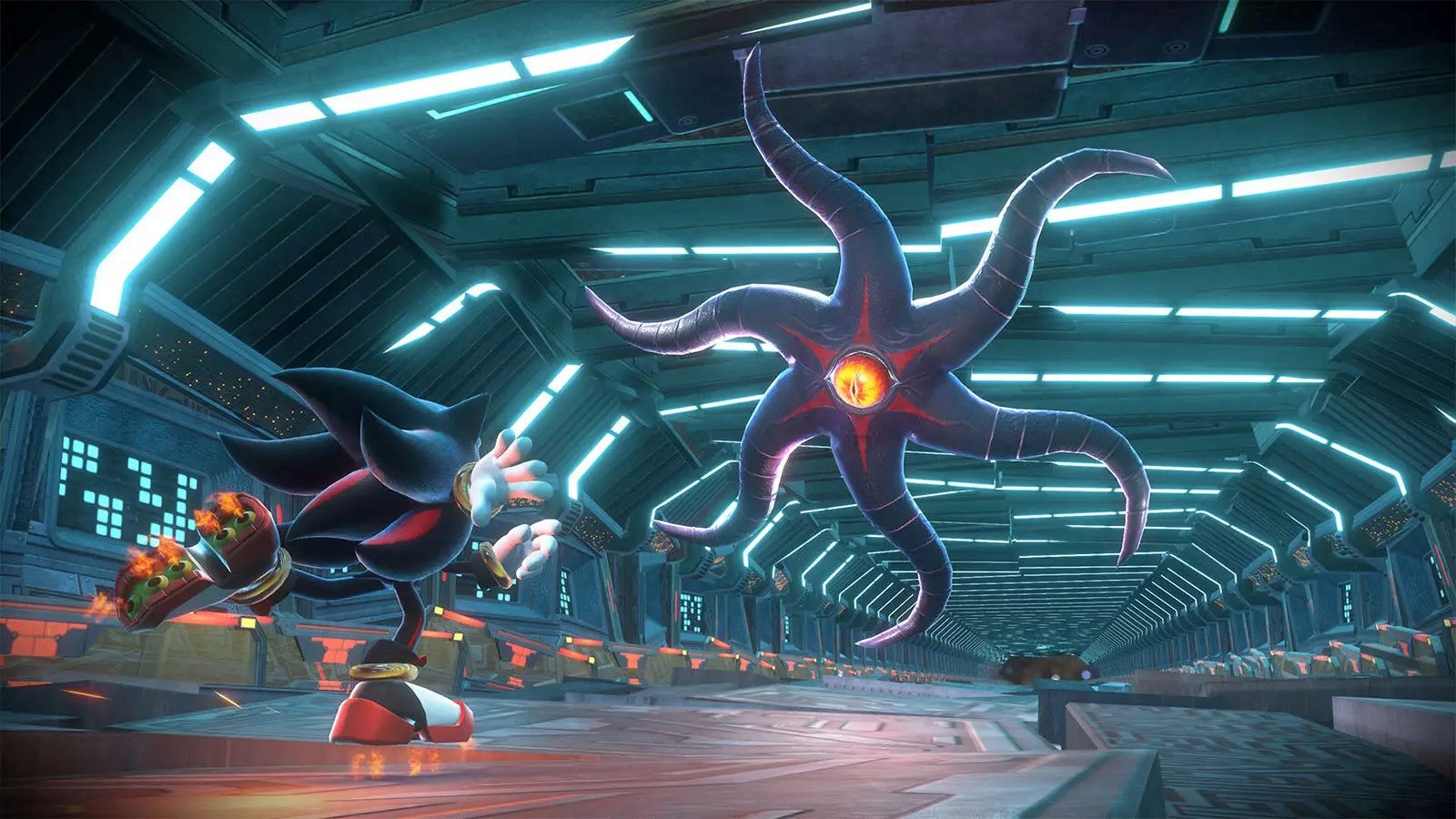
Image source: Gamesplanet
Some argue the series is too imaginative and inventive, always experimenting and never wholly committing to a single gameplay style. These folks would say that approach leads to uneven quality across titles. I’d counter by saying that inconsistency is a small price to pay for infinite novelty and innovation. Not all of Einstein’s experiments were successes, but we owe him a hell of a lot, just as we owe Sonic for pushing the limits of what a platformer can be. Not every game will be every fan’s cup of tea, and that’s okay. That outcome is natural when a series dares to shake things up as often as Sonic does. The hedgehog’s games aren’t designed to be safe, stale comfort food; they’re menu items from the electrifying, dangerous new restaurant your friends told you to try on a risky Friday night.
When’s the last time you saw a 90’s platformer mascot evolve into a hero who wields a sword and fights King Arthur at the speed of sound? That’s the kind of bold swing that keeps Sonic fans on the edges of their seats. Certain platformers lean into predictability and safety, but that’s antithetical to Sonic’s thrill-seeking nature — and that daringness is what keeps Sonic fans coming back. The games won’t always be perfect, but at least I’ll never be bored by them. More studios should take a page out of SEGA’s playbook for this reason alone.
Remember: if it weren’t for SEGA’s developers being absolutely loaded with novel ideas, we’d never have gotten the Kinect-exclusive Sonic Free Riders — AKA, my favorite sports game of all time, since it lets me control a hoverboard with my actual body. Though Sonic Free Riders released in 2010, I play it to this day, and it remains a more rewarding experience than anything I can do with a controller.
The characters’ dynamic designs and depth
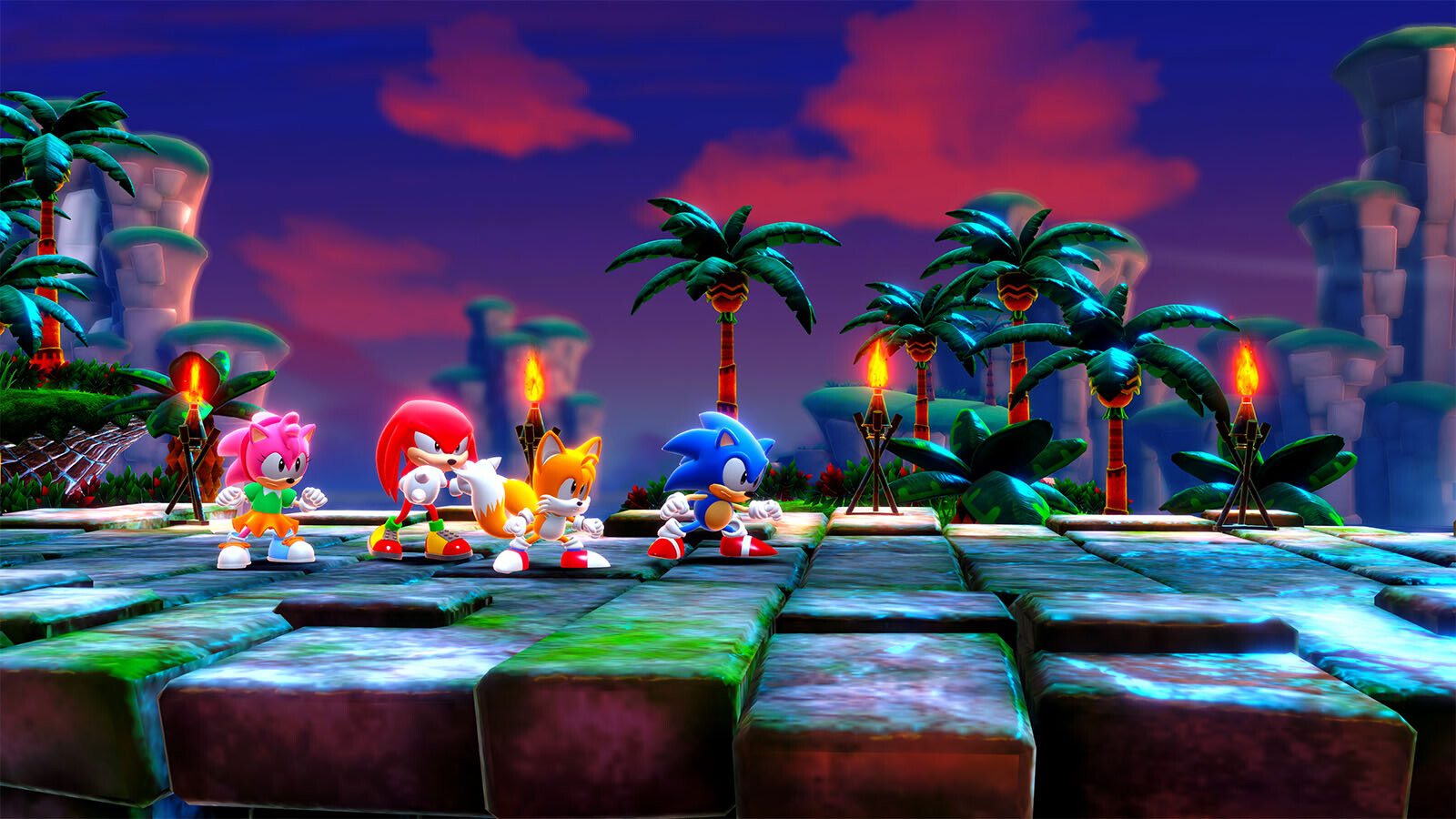
Image source: Gamesplanet
Sonic, his friends, and his foes all sport incredible character designs. The cast is colorful and friendly enough to appeal to audiences of all ages. At the same time, each character has visual spice to hook discerning, mature audiences hunting for artistically inspired aesthetic novelty. This dual-function design philosophy is how Sonic can fit in with the cartoon-styled roster of Super Smash Bros. while Shadow teams up with a realistic Batman in 2025’s Sonic X DC crossover. The cast’s wild diversity and incredibly flexible designs mean that Sonic and co. attract numerous demographics in a way few franchises can. It’s all part of an unspoken four-quadrant design philosophy. SEGA's betting the series has at least one character that’ll hook you, no matter who you are.
These characters don’t just look incredible, either — they all have alarmingly deep personalities. See the divide between series protagonist Sonic the Hedgehog and his low-priority, tertiary rival Jet the Hawk. Despite barely getting time to shine across a handful of Sonic games, Jet still has incredible thematic depth and pairs extraordinarily well with Sonic; both are speed demons, but they’re cut from different cloth. Sonic takes his speed for granted, leaving him joyous and generous from a struggle-free life. Jet, meanwhile, is bitter and ruthless, always pushing himself to the limit to compensate for lack of natural athletic talent. The latter is a natural foil for the former, giving both ample room to learn from each other, which they do across Sonic Riders, Sonic Riders: Zero Gravity, and — to a much lesser extent — Sonic Free Riders. Not a ton of attention is called to the Sonic series’ thematic depth, but it’s readily visible for those paying attention. Like me.
An omnipresent blue blur

Image source: Gamesplanet
Sonic and his friends have had a zillion iterations over the years, meaning there’s bound to be an interpretation that clicks with your unique sensibilities. While game Sonic started out as an anthropomorphic analog for Bill Clinton, the hedgehog’s become tamer in recent years. As such, the games have separate offerings for those want too-cool-for-school attitude or would prefer that Sonic be a cuddly goofball. SEGA once attempted to entice a spicier audience with 2005’s Shadow the Hedgehog, appealing to the punk-rock crowd. That game saw Sonic’s black-and-red hedgehog rival drive a motorcycle, curse like a sailor, and shoot humans with guns while threatening genocide against an alien race. And there was even a time when Final Fantasy fans got a Sonic adventure suited to their narrative tastes with 2006’s Sonic the Hedgehog. SEGA is always trying to lure in new demographics. And this effort extends well beyond games.
Sonic’s had a long history in comic books, too. Perhaps you read and clicked with the Archie and IDW comics’ heroic Sonic, or maybe you preferred the rough-’n-rude Fleetway comics’ interpretation of Sonic (whom I find to be hysterically funny). These comics got multiple generations of kids invested in the blue blur. The Archie comic especially; it holds the honor of being the longest-running monthly American comic to never be relaunched. That’s right — it beat out Batman and Spider-Man. Not to mention, Sonic comics are far from extinct; the IDW series is still running.
Sonic’s also a longtime TV star. He had three main cartoons in the 90’s that all starred Jaleel White as Sonic’s voice actor, despite being entirely different shows. Two of them, Sonic the Hedgehog and Adventures of Sonic the Hedgehog, ran parallel to each other in 1993, even though they were for entirely different audiences. The former was a light-hearted show for very young kids, while the latter was an adventure series that aligned with Archie’s Sonic comics. This duality was deliberate, and rather uncommon for its time: the shows were concocted together to give the ABC network a varied Sonic programming spread. Imagine: you want to watch Sonic on TV but aren’t sure which show you’re going to get because there are multiple on the air! That was an actual dilemma kids had in 1993.
While the Sonic the Hedgehog show developed a serious following for its engaging narrative, The Adventures of Sonic the Hedgehog remains famous for its Sonic Says PSAs. These PSAs may have been the inspiration for the Sonic Says information panels in Sonic & SEGA All-Stars Racing, which spawned the famous Internet Sonic Says meme format — one more example of Sonic’s incredible reach. He’s had more cartoons since, providing further interpretations of the character across the anime-flavored Sonic X as well as Sonic Boom and the recent Netflix series Sonic Prime. Netflix has even posted a few full episodes of Sonic Prime on its official Netflix Family YouTube channel, if you want to give the series a look.
And, of course, we cannot forget the three live-action Paramount movies that have given Gen Alpha kids their own version of Sonic to cherish. But we must also remember the original Sonic movie from 1996, which I’d argue is the best of the entire lot. With its incredible art style, charming story, and an effortlessly hip interpretation of Sonic that captures his original early 90s essence to a T, it’s one of the best ways to spend an hour of your life. You can easily find the film online. And you should. The Sonic inside the ‘96 film is so casually cool he might just ruin every other interpretation of Sonic for you.
In short, no matter what entertainment you consumed as a kid, odds are there was a version of Sonic hanging around waiting to get you hooked on blue-tinted adventure. And for nostalgic adults, there was always a fresh flavor of Sonic entertainment readily available. That boundless variety continues to be a series selling point to this day. I should know; I'm nearly three decades deep in witnessing Sonic's multimedia evolution.
The ultimate fan community
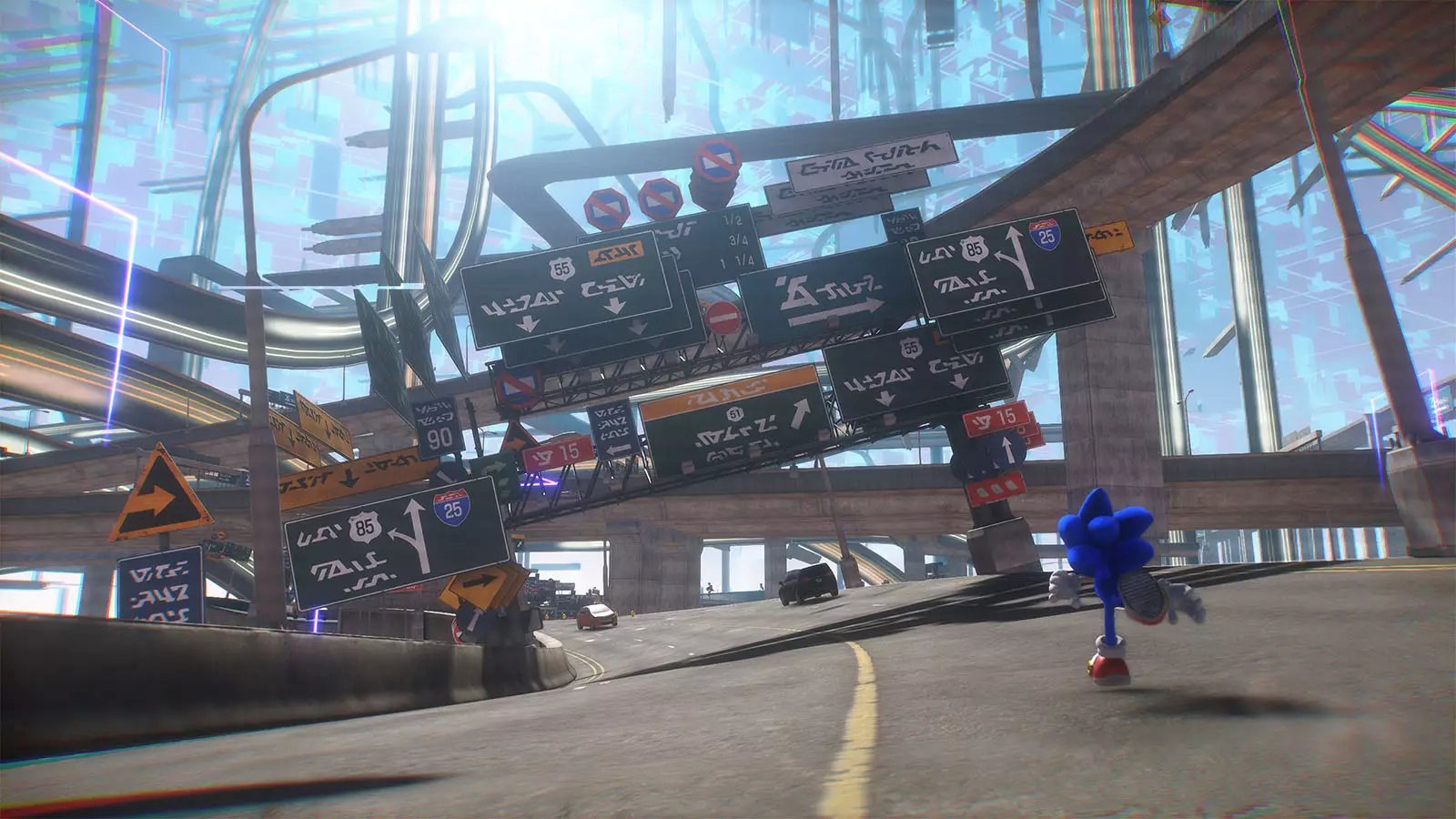
Image source: Gamesplanet
While Sonic himself may be the one who sucks you into his franchise’s vortex, its inescapable momentum is sustained by legions of diehard fans. There are only a few other entertainment properties on Earth that command the same level of fan dedication as the Sonic series.
Sonic fans are still releasing mods for 2011’s original PC release of Sonic Generations, a game that’s been hidden on Steam in favor of the re-release (Sonic X Shadow Generations). Said fans produce dozens, if not hundreds or thousands, of mods for every single new Sonic game. And they don’t stop there. They create entire, professional-grade fan games from the ground up, too.
For example, look at Sonic Omens. Not only is the free fan game visually stunning, but it has fleshed out gameplay, strong level design, a fully voice-acted story mode with proper cutscenes, and a banger original soundtrack. The game even landed the vocal talents of Bentley Jones, a singer who’s worked on official Sonic projects. And on top of all of that, Omens has a runtime comparable to some official Sonic games. It’s one of my favorite fan projects, and I highly recommend you give it a whirl if you enjoyed Sonic X Shadow Generations; Omens gives Sonic and Shadow unique stories and gameplay, making its overall package a compelling companion to SEGA’s official release.
To SEGA’s immense credit, the company has been very supportive of fan creations. And it’s gone further than simply acknowledging fan passion.
See the story of Christian Whitehead, a Sonic fan-game maker. Way back in 2009, he produced a proof-of-concept for a Sonic CD mobile port and contacted SEGA, seeking to make his work official. Though it took some convincing from Whitehead, SEGA ultimately enlisted him, leading to an excellent Sonic CD re-release across mobile devices and consoles. This successful effort was followed by top-shelf mobile ports of the original Sonic the Hedgehog and Sonic the Hedgehog 2. After that triplet of victories, SEGA brought Whitehead and other fans aboard to produce an original game, now known as Sonic Mania. As you can guess, the game was named to acknowledge fans’ unwavering dedication to Sonic.

Image source: Gamesplanet
Take a moment to digest the enormity and passion of Sonic’s fan community: thousands, if not tens or hundreds of thousands, of skilled programmers and coders around the world are so in love with Sonic that they routinely donate their immense talent to fan works. And those tributes are good enough to lead to modern miracles like Sonic Mania. Plus, we haven’t even touched on the millions of works of Sonic fan art on the Internet. For every tech-savvy Sonic acolyte putting in work on the game front, there are uncountable numbers of regular folks doing their part to promote the series’ joy elsewhere. Take the lore historians, for example. While I champion Sonic history over here at ROG, creators like Cybershell are spreading the good word via incredibly thorough, entertaining long-form videos.
Sonic’s fans are so driven that, before Paramount came to the table, series enthusiasts took it upon themselves to produce a truly ambitious fan film that brought back Jaleel White as the voice of Sonic and accrued millions of views.
Then, in 2019, Paramount’s initial stab at a Sonic film summoned the full might of the community. Fans spoke so loudly and passionately about Sonic’s big-screen character design that they convinced Paramount to spend millions of dollars redesigning him in time for his live-action debut. And the director of Paramount’s Sonic the Hedgehog films, Jeff Fowler — the good man who publicly committed to redesigning Sonic per fans’ requests — is also a long-time Sonic series follower. In an earlier stretch of his career, he did animation work for 2005’s Shadow the Hedgehog. In this way, the movies aren’t just externally influenced by tectonic fan force; they have fan dedication fueling them from the inside. That’s the reach of Sonic. Whether you’re an art forum poster, Australian fan game maker, ASUS copywriter, or big-time Hollywood director (and not just Jeff Fowler, but also John Carpenter), the blue hedgehog will demand your affection, and he will receive it.
The all-consuming Sonic singularity
Though he had humble beginnings as a video game character and corporate mascot for SEGA, Sonic the Hedgehog has since become something far greater. At this point, he’s an entire ecosystem of ideas, aesthetics, and experiences that meld together in a way that no other entertainment endeavor on Earth has successfully mimicked. That’s why he’s endured for so long and shows no signs of stopping. That’s why I’m still on board. Like any work of art, Sonic might not click with everyone, but for the millions upon millions of people who buy in — they're in for life.
Author
Popular Posts

How to adjust your laptop's P-Cores and E-Cores for better performance and battery life
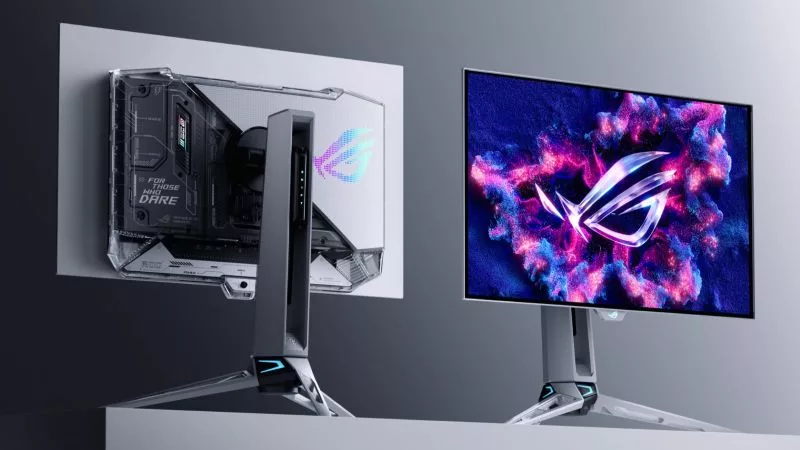
Prepare for Tandem OLED splendor with these new ROG gaming monitors
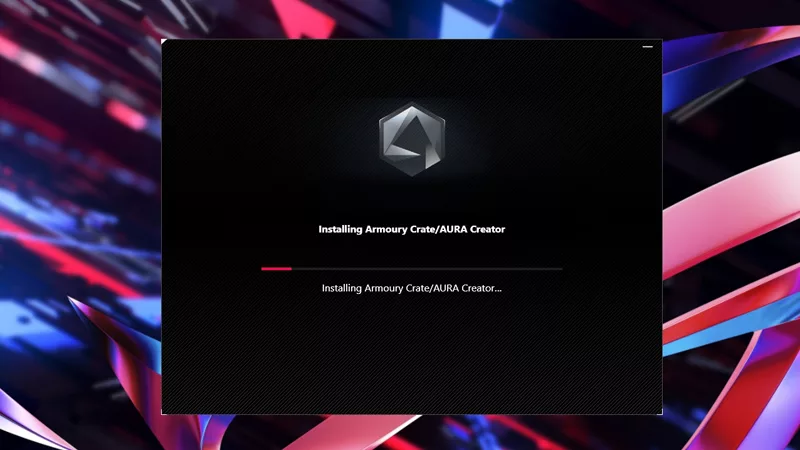
How to Cleanly Uninstall and Reinstall Armoury Crate
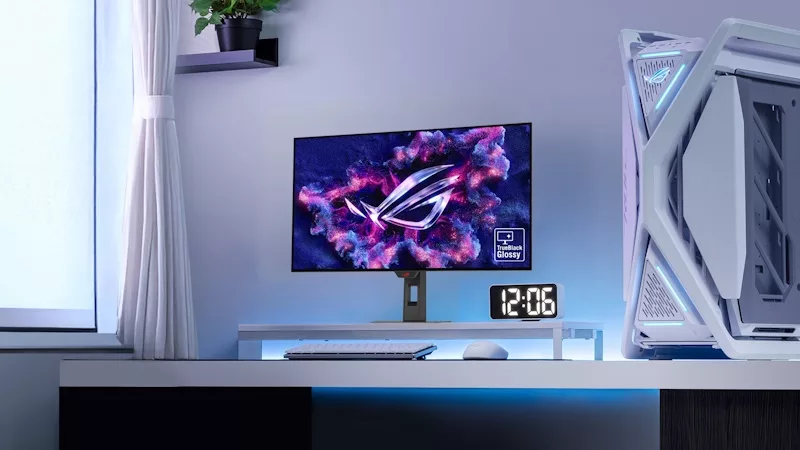
32-inch glossy WOLED panels debut in the ROG Strix OLED XG32UCWMG and XG32UCWG gaming monitors
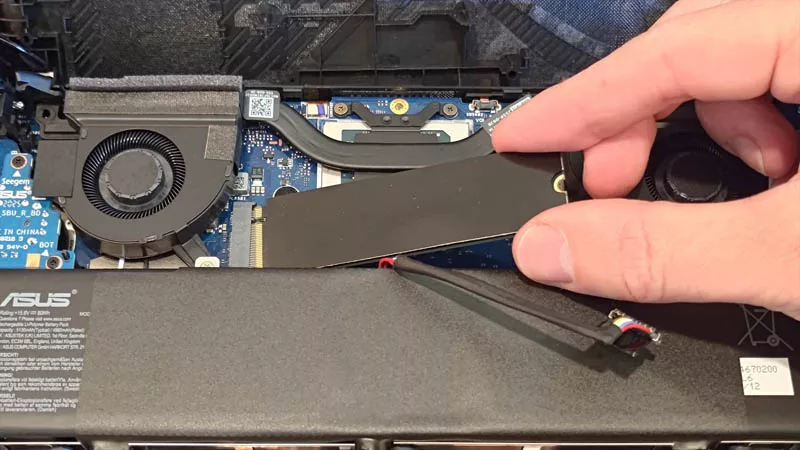
How to upgrade the SSD and reinstall Windows on your ROG Ally, ROG Xbox Ally, or ROG Xbox Ally X
LATEST ARTICLES

Level up your Xbox, PlayStation, and Nintendo Switch 2 with these ROG accessories
ROG has headsets, controllers, and other gadgets that’ll amp up your console experience, too.

How ROG reinvents the PC gaming platform
Here's why millions choose the Republic of Gamers, ROG, as their defining gaming destination.

The best AAA games for the ROG Ally and ROG Ally X
The ROG Ally is a new breed of handheld, capable of handling large-scale AAA games with great performance. Here are some of our top games for the system.

ROG Travel has assembled a legendary cast for its new ROG Xbox Ally video
ROG Travel is back in action with a zany new video to get folks aboard the ROG Xbox Ally hype train.
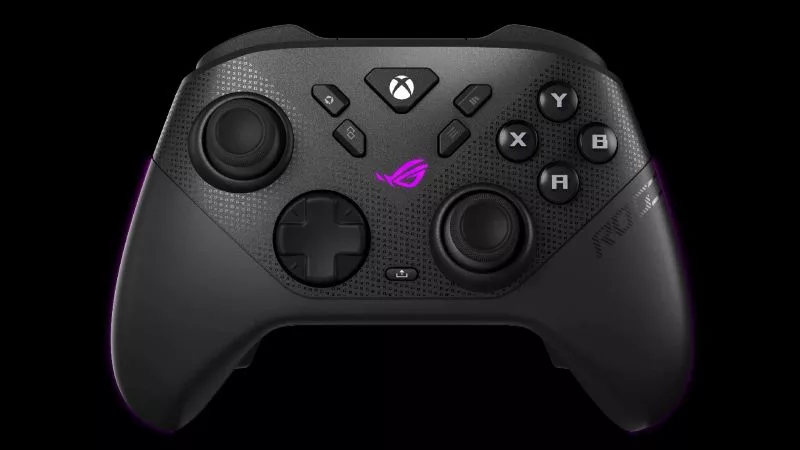
The ROG Raikiri II Xbox Wireless Controller is your next-gen premium gamepad for console and PC
From your desk or your couch, the ROG Raikiri II Xbox Wireless Controller is perfect for your PC, Xbox, or ROG Xbox Ally.
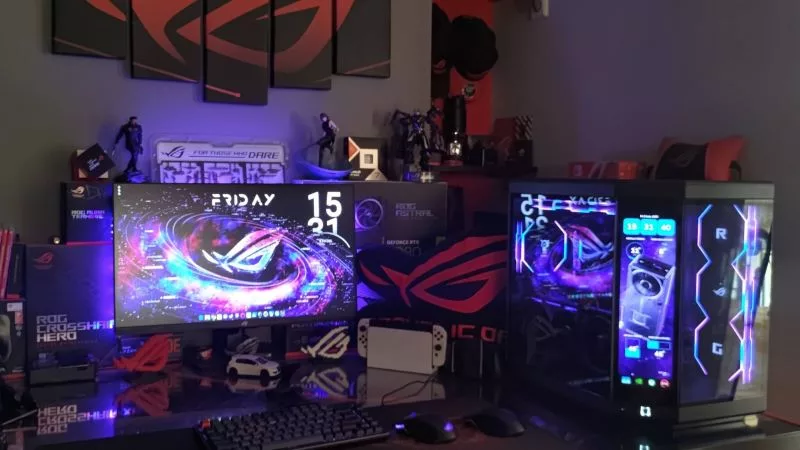
Four slick ROG PC gaming battlestations to model your setup after
Check out some of the coolest gaming PC battlestations assembled by ROG fans.

